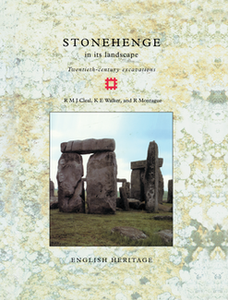English Heritage Archaeological Monographs
English Heritage, 2014. https://doi.org/10.5284/1028203. How to cite using this DOI
Data copyright © English Heritage unless otherwise stated
This work is licensed under the ADS Terms of Use and Access.
Primary contact
Historic England
The Engine House
Firefly Avenue
Swindon
SN2 2EH
Resource identifiers
- ADS Collection: 1416
- DOI:https://doi.org/10.5284/1028203
- How to cite using this DOI
Stonehenge in its Landscape: Twentieth-century excavations
Cleal, R., Montague, R., Walker, K.
English Heritage (1999)
Abstract:

This volume represents a detailed discussion of the structural history of Stonehenge, arrived at by the integration of evidence from primary records of excavations carried out between 1901 and 1964. These major campaigns of excavation and recording include those of Prof William Gowland (1901); Lt-Col William Hawley (1919-26); Profs Stuart Piggott and Richard Atkinson with J F Stone (1950, 53-5,56,58 and 64) and some smaller, previously unpublished campaigns as well as more recent, small-scale excavations which are already published. The evidence for the use of the monument from the Middle Neolithic to the present day is discussed in terms of its landscape and social settings. The evidence for the rephasing of the monument, including artefactual and ecofactual assemblages, details of the radiocarbon dating programme, geophysical surveys, transcripts of all available field plans, sections, and stone elevations is presented together with a variety of summary lists, concordances, and a guide to the site archive. A new suite of radiocarbon determinations has been obtained which redefines our understanding of the sequence of construction and use of the monument and augments the surviving archaeological evidence.
Download monograph
| Stonehenge in its Landscape: Twentieth-century excavations, Cleal, R.|Montague, R.|Walker, K., English Heritage (1999), ISBN: 9781848022102 | 141 Mb |





